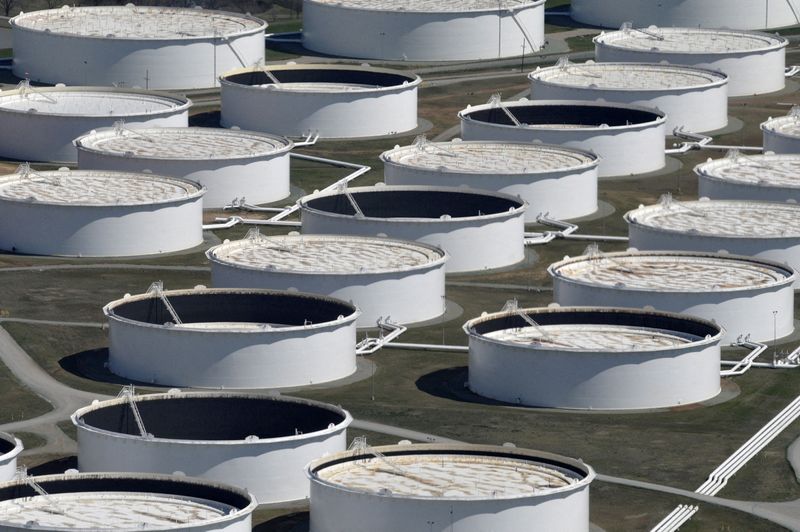By Nicole Jao
NEW YORK (Reuters) -Oil prices rose about 2% on Wednesday, buoyed by worries about conflict in the Middle East, but gains were capped by higher U.S. crude inventories and gloomy economic prospects in Europe.
Brent crude futures rose $2.06, or 2.34%, to settle at $90.13 a barrel. U.S. West Texas Intermediate (WTI) crude futures rose $1.65, or 1.97%, to close at $85.39 a barrel.
Prices fell early in the session but reversed declines on heightened geopolitical risk, said Price Futures analyst Phil Flynn.
Israel stepped up bombings of south Gaza, officials said, and violence flared elsewhere in the Middle East. Prime Minister Benjamin Netanyahu said in a televised statement that Israel is preparing a ground invasion of Gaza.
U.S., crude inventories rose by 1.4 million barrels in the latest week to 421.1 million barrels, the Energy Information Administration (EIA) reported, exceeding the 240,000-barrel gain expected by analysts in a Reuters poll.
The EIA data “is more bearish because it's a big switch from a big draw in the API data to a build in the EIA data,” said Bob Yawger, director of energy futures at Mizuho. Industry data from the American Petroleum Institute (API) on Tuesday had showed a larger-than-expected draw in crude stocks.

Adding to weak European economic data in recent weeks, European Central Bank data showed bank lending across the euro zone came to a near standstill last month, further evidence that the 20-nation bloc may be close to a recession.
Crude demand could get a boost in China, the world's biggest oil importer, which approved a bill to issue 1 trillion yuan ($137 billion) in sovereign bonds and allow local governments to issue new debt from their 2024 quota to boost the economy. Yet Beijing also took steps that could limit crude demand, such as putting a ceiling for its oil refining capacity at 1 billion metric tons by 2025 to streamline its vast oil processing sector and curb carbon emissions.